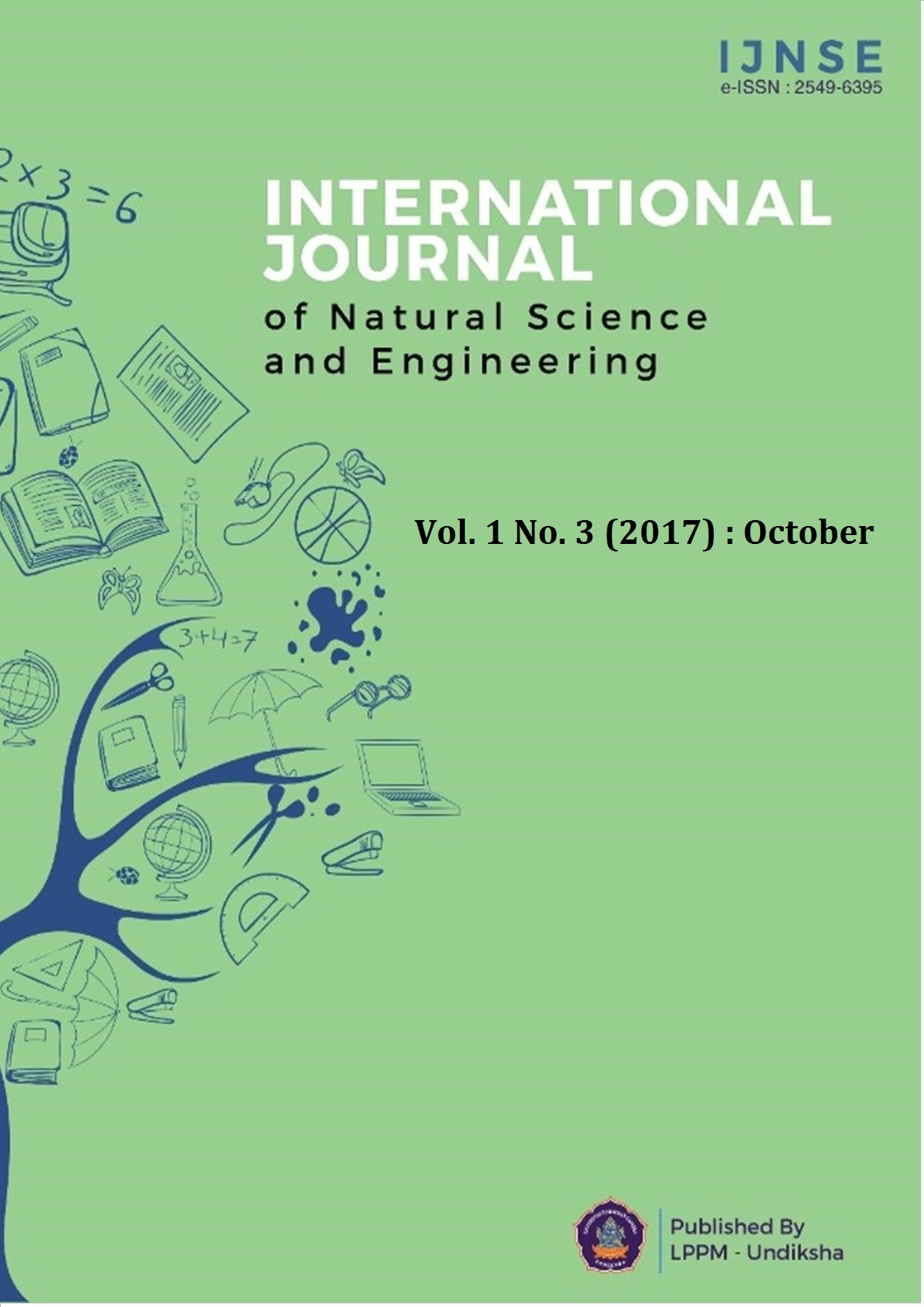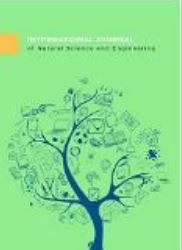KAJIAN KESESUAIAN LAHAN BUDIDAYA TANAMAN OBAT DENGAN APLIKASI SISTEM INFORMASI GEOGRAFIS (SIG) DI KAWASAN SUKU SAMBORI KABUPATEN BIMA
DOI:
https://doi.org/10.23887/ijnse.v1i3.12940Abstract
This research can provide the answer that the potential of the local area is quite potential and needs to be utilized wisely for the welfare of the community. The purpose of this research is to know the potential of medicinal plant cultivation land and to obtain data base on the suitability of medicinal plant cultivation area with application of Geographical Information System (GIS) as a medicinal plant area in Sambore Tribe Area. In this research using survey method with MLA (Multidiciplinaire Landscape Assessment) approach is a method to determine "what resources are most important to society. The research instruments that we present are tools used in research processes such as GPS, benchmarking, thermometer, geological compass, stpowatch, sechi disk, salinometer, and GIS data analysis software and supported by data collection methods that are observation, documentation and experimental methods so this research can be done wellReferences
Arikunto, Suharsimi, 2002. Prosedur Penelitian Suatu Pendekatan Praktik, Jakarta: Rineka Cipta.
Sugiono, 2000. Statistika untuk penelitian. Bandung : CV. Alvabeta.
Dwiyogo, D, Wasis dan Karwono.1992. Metode Eksperimen dalam Penelitian Pendidikan. Malang: IPTPI Cabang Malang Program Pasca Sarjana Malang.
Aslan, L.M, 2008. Budidaya Tanaman obat. Penerbit Karnisius. Yogyakarta
Dahuri, Rokhmin., Rais, Jacub., Ginting, Sapta P., dan Sitepu J. 2000. Pengelolaan Sumber Daya Wilayah Pesisir dan Lautan Secara Terpadu. PT Pradnya Paramitha. Jakarta.
Dimyati, Ratih D. dan Dimyati, Muhammad. 1990. Remote Sensing dan Sistem Informasi Geografis untuk Perencanaan. Fakultas Teknik Universitas Muhammadiyah Jakarta. Jakarta.
Direktorat Jenderal Perikanan Budidaya. 2005. Profil Tanaman obat Indonesia. Direktorat Pembudidayaan Departemen Kelautan dan Perikanan, Jakarta
Djurdjani, 1999. Konsep pemetaan. On The Job Training (OTJ) Mengenai Aplikasi SIG untuk Perencanaan dan Pengelolaan Wilayah Pesisir Secara Terintegrasi di Sepuluh Propinsi Wilayah MCMA. PUSPICS Fakultas Geografi Universitas Gajah Mada. Yogyakarta
Basuki, I. dan D. Sheil. 2004. Prioritas masyarakat lokal dalam pengelolaan sumber daya lahan hutan di hulu sungai Malinau, Kalimantan Timur. Environmental Services Briefs, CIFOR, Bogor, 4p.
Frazier, S. 1990. Distribution dan Status of Crocodile Populations in Irian Jaya Indonesia. Dalam: Crocodiles. Proc. of the 9th Working Meeting of the IUCN/SSC Crocodile Specialist Group, Lae, Papua New Guinea. Vol.1. pp 208-250. IUCN-The World Conservation Union Publ. N.S. Gldan, Switzerldan.
Phillips, A. 2004. The Durban Action Plan, revised version, march 2004, IUCN, Vth World Parks Congress, 38p.
Richards, S. J. dan S. Suryadi (eds). 2002. A Biodiversity Assessment of Yongsu - Cyclops Mountains dan the Southern Mamberamo Basin, Papua, Indonesia. RAP Bulletin of Biological Assessment. Conservation International, Washington, DC, USA.
Sheil, D., R.K. Puri, I. Basuki, M. Van Heist, M. Wan, N. Liswanti, Rukmiyati, M.A. Sardjono, I. Samsoedin, K. Sidiyasa, Chrisdanini, E. Permana, E.M. Angi, F. Gatzweiler, B. Johnson dan A. Wijaya. 2004. Mengeksplorasi keanekaragaman hayati, lingkungan dan pandangan masyarakat lokal mengenai berbagai lanskap hutan; metode-metode penilaian lanskap secara multidisipliner, CIFOR, Bogor, 101p.
Sheil, D., N. Liswanti, I. Basuki, M. Wan, I. Samsoedin, K. Kartawinata, Rukmiyati dan M. Agung. 2003. Prioritas lokal dan keanekaragaman hayati dalam lansekap hutan: apa penting menurut masyarakat? Dalam: Jurnal Hutan Indonesia.
Sheil, D. dan A. Lawrence. 2004. Tropical biologists, local people dan conservation: new opportunities for collaboration. Dalam: TRENDS in Ecology dan Evolution, vol.19 (12): 634-638. DOI: https://doi.org/10.1016/j.tree.2004.09.019





